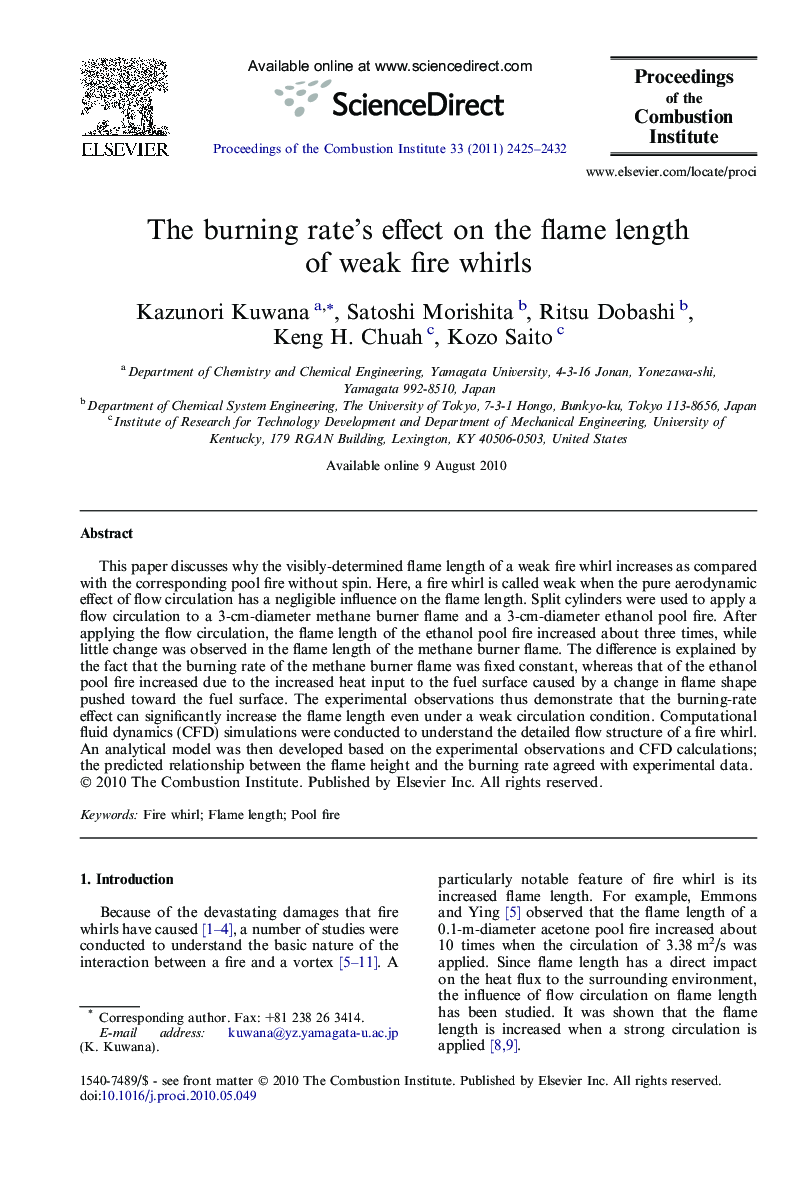| Article ID | Journal | Published Year | Pages | File Type |
|---|---|---|---|---|
| 240696 | Proceedings of the Combustion Institute | 2011 | 8 Pages |
This paper discusses why the visibly-determined flame length of a weak fire whirl increases as compared with the corresponding pool fire without spin. Here, a fire whirl is called weak when the pure aerodynamic effect of flow circulation has a negligible influence on the flame length. Split cylinders were used to apply a flow circulation to a 3-cm-diameter methane burner flame and a 3-cm-diameter ethanol pool fire. After applying the flow circulation, the flame length of the ethanol pool fire increased about three times, while little change was observed in the flame length of the methane burner flame. The difference is explained by the fact that the burning rate of the methane burner flame was fixed constant, whereas that of the ethanol pool fire increased due to the increased heat input to the fuel surface caused by a change in flame shape pushed toward the fuel surface. The experimental observations thus demonstrate that the burning-rate effect can significantly increase the flame length even under a weak circulation condition. Computational fluid dynamics (CFD) simulations were conducted to understand the detailed flow structure of a fire whirl. An analytical model was then developed based on the experimental observations and CFD calculations; the predicted relationship between the flame height and the burning rate agreed with experimental data.
